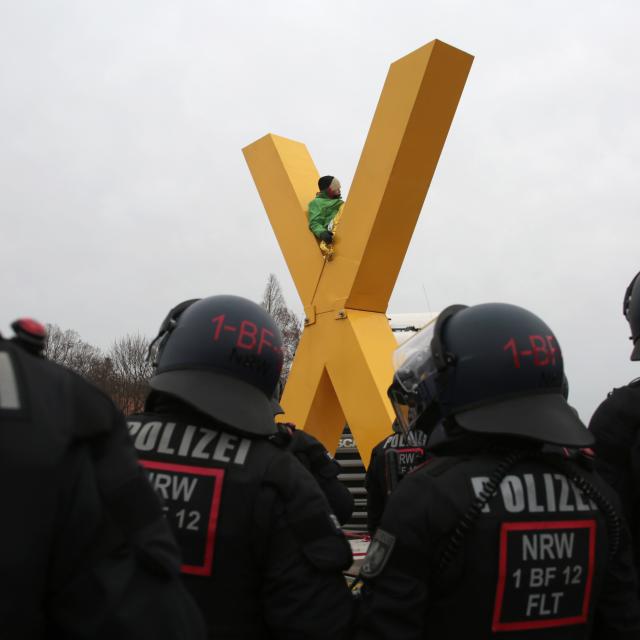
A lot of riches are at stake for the energy company RWE. And a lot of lignite, which still lies beneath the small village of Lützerath. Last Saturday, tens of thousands of people gathered at the site to demonstrate against further mining. The Lëtzebuerger Journal was on site.
This article is provided to you free of charge. If you want to support our team and promote quality journalism, subscribe now.
Saturday, 14 January, 10:30 a.m., Cologne Central Station. The platform is filled with people. People with homemade signs and backpacks waiting for the next train to Hochneukirch. Not far from there, the demonstration against the demolition of the small village of Lützerath begins at 12 o'clock. A group of pensioners stands out on the track. They carry cut-outs of the earth in the shape of a heart with the inscription "Omas for Future" (grand-mothers for future). The second-to-last train pulls in to arrive on time, but suddenly everyone has to get off – "Error, technical fault", the announcement saya. The crowd doesn't let it get them down, the goal is the demo, and so the first slogans start: "Lützi bleibt! Lützi bleibt!" (Lützi stays!; Lützi being short for Lützerath) The next train arrives and thus the next setback: it is a short train. The obvious disappointment is followed by an announcement from the railways: "The trains have been ordered like this for the weekend " and "The organisers of the demonstration have failed to apply for special trains". From the crowd you hear people repeatedly questioning whether this is a mere coincidence. Eventually the next train arrives and most of the demonstrators can finally leave, the crowd applauds.
Arrival in Hochneukirch, people put on rain jackets, waterproof trousers and ponchos, some unpack their umbrellas, flags are hoisted, slogans are shouted: "Keep it in the ground! Keep it in the ground!" From the small platform they walk over into a puddle of oil – a shuttle bus has leaked. While the fire brigade cordons off the road, a young man tells people over a megaphone to walk if possible. It is a 40 to 60 minute walk in the rain, but the crowd is determined and the mood is good.
A small village of great importance
Before the eviction began, only just over 70 people lived in Lützerath. But the village is located right next to the Garzweiler open-cast mine, part of the Rhenish lignite mining area, the largest of its kind in Europe. Today, it is completely owned by the energy company RWE. There are another 230 million tonnes of lignite under the village of Lützerath, which is why the village is now to make way for it. In recent decades, more than 13 other villages have been demolished solely because of the Garzweiler open-cast mine. The lignite extracted here goes almost exclusively to the nearby Neurath lignite-fired power plant, which, as of 2019, is the second largest CO2 emitter in the whole of Europe after the Polish Bełchatów power plant.
Continue reading for free
Get access to this article by subscribing to our newsletter that is sent twice a week. You also have to have a Journal account.
Already have an account?
Log in


